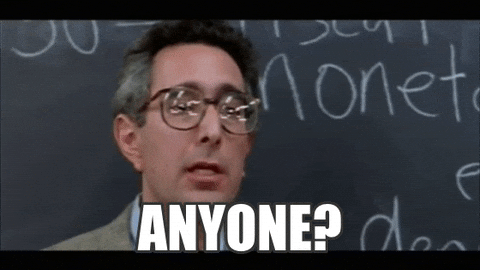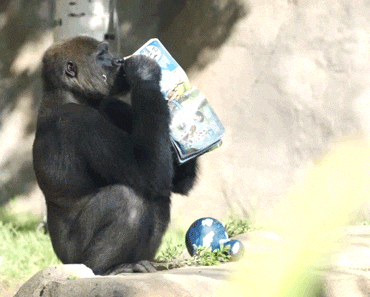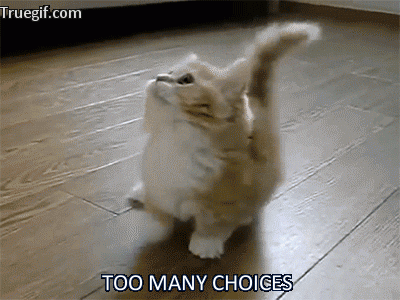Have you ever sat in an English class or read literary criticism – and wondered how some people manage to come up with creative – at times far-fetched – interpretations of poems and novels?
You’re not alone.
This applies to SparkNotes entries, literature academic papers, and admittedly, Miss Jen’s Hyperbolit blog posts. Most literary educators are probably used to being the butt of jokes by now, in particular, for their occupational hazard of ‘overreading’.
There’s even a viral joke about this:

As someone who regularly ‘overreads’ for fun (and I appreciate that this may sound insufferably nerdy to some), I’d say there’s more than a grain of truth to this characterisation.
The study of literature, after all, is largely about reading between the lines without reading too much into it all. That’s pretty much the task of any English student in a nutshell.
The ‘best’ response is never a summary of what’s literally presented on the surface, so the key to acing any English exam is to activate your symbolic, associative – and within reasonable limits, creative – thinking.

Over the years, though, I’ve come to notice an elephant in the room that no one wants to address: just because “the curtains were blue”, why does it then follow that “the curtains represent immense depression and a lack of will to carry on”? How does the first statement lead to the second – where’s the link?
More importantly, how do we bridge the link between what we read from the text and what is ‘meant by’ the text (which could mean different things to different readers)?
As a lifelong student and teacher of literature, I’ve realised that the skill of ‘finding the link’ hasn’t been given as much attention as it deserves.
Unsurprisingly, this has led to many confused and frustrated students across the board, the result of which is often an intense dislike for the subject – and this to me is a damned, damned shame.
It’s one thing to not be interested in literature because your interests genuinely lie somewhere else, but it’s an entirely different thing to not like literature just because you’ve been on the receiving end of poor teaching.

With this post, then, I hope to mend some broken relationships, and inspire a renewed perception of how ‘reading between the lines’ doesn’t have to be such a painful, labyrinthine, and brain-racking process.
The 4 ‘must-haves’ of writing literary analysis
Let’s start by laying out the key steps of writing any literary commentary:
Step 1 – Gain a basic understanding of the text
Step 2 – Extract key ideas and/or themes derived from Step 1
Step 3 – Identify the literary techniques in the text
Step 4 – Analyse how the use of said literary techniques communicate the key ideas and themes in the text
Depending on how perceptive of a reader you are, Steps 1 and 2 should be manageable.
And if you’ve familiarised yourself with some of the most common literary techniques (i.e. poetic, rhythmic and stylistic devices), Step 3 shouldn’t be a major challenge either. (If you haven’t, I’d recommend that you click into the links to the three types of devices I’ve listed)
Where most students seem to trip up in the process is Step 4. Having done Steps 1 to 3, the crucial question is how to tie these pieces together in a way that yields a cogent argument and a perceptive interpretation.
To understand this, let’s return to the joke for a moment and break it down into three levels:
- Literal reference: curtains
- Figurative vehicle: the colour blue
- Thematic implication: immense depression, lack of will to carry on living
Often, the gap that sets good readers apart from the rest lies between the ‘figurative vehicle’ and the ‘thematic implication’, i.e. perceptive readers are able to glean thematic insights from engaging with figurative language.
Why does blue imply depression? This is an example of colour symbolism, so what does blue symbolise, or what ideas come to mind when we use ‘blue’ as a metaphoric reference? If you’ve heard of the idiom ‘feeling blue’, you’d know that blue carries a connotation of sadness.
Other colour-related references in the English Language include ‘tickled pink’ (happy), ‘seeing red’ (angry), ‘green with envy’ (jealousy), so any time you see these colours mentioned in literary descriptions, you’d benefit from recalling these connotations.
Of course, this is predicated on us already knowing these idioms, but the bigger point here is to consider the ‘why’ behind each descriptive decision a writer makes.

Think about it: the curtains could be of any colour (or the colour doesn’t even have to matter / be a point of focus in the description), so why does the writer specifically pick blue, out of all other hues, and why does the writer even point out its colour in the first place?
Overreading? Perhaps.
Necessary? Kind of. Yes, if you want to write strong literary analysis; no, if you just want to read without thinking too much (which, unfortunately, isn’t quite the way English studies work).

Example: coming up with ‘analysis’ for William Blake’s ‘London’ (1794)
To explain how we can come up with the ‘link’ between technique and theme, let’s contextualise our discussion with William Blake’s ‘London’.
I wander thro’ each charter’d street,
Near where the charter’d Thames does flow.
And mark in every face I meet
Marks of weakness, marks of woe.In every cry of every Man,
In every Infants cry of fear,
In every voice: in every ban,
The mind-forged manacles I hearHow the Chimney-sweepers cry
Every blackning Church appalls,
And the hapless Soldiers sigh
Runs in blood down Palace wallsBut most thro’ midnight streets I hear
How the youthful Harlots curse
Blasts the new-born Infants tear
And blights with plagues the Marriage hearse
How does the use of repetition convey vast suffering?
Repetition is always a good place to start, as it’s easy to identify (but not always as easy to analyse, as you will see from this post).
In stanza 2, the word “every” is repeated 5 times (it appears for the first time in line 3 of stanza 1), and the phrase “in every” is repeated 4 times (3 times at the start of successive lines 5, 6 and 7, which is an example of anaphoric tricolon).
But here’s the key question: what is the nature of repetition? If you repeat a word, you’re also pluralising the number of times the word appears, which adds to the volume of your description. Notice the words ‘pluralising’, ‘adds’ and ‘volume’ – they all convey the idea of abundance.

Now, let’s consider the actual words which are repeated in the stanza: it’s the “cry” of Man, Infants, and human voices. There’s not just one Man, or one Infant, or one human voice crying aloud, but many people, a kind of representational ‘everyone’.
As such, the use of repetition in this stanza conveys the sheer abundance of cries from the London populace, and in turn, reinforces the breadth and scope of suffering that “plagues” (to use Blake’s own word in the final line) a city undergoing heavy industrialisation (as London was in the late 18th century, when the Industrial Revolution was at its height).
So what leads us from the technical starting point of “the poet uses repetition in stanza 2” (step 3 in our list above) to the thematic end point of “the poet reinforces the breadth of suffering among the people in London” (step 4) is our awareness of repetition as a trope of abundance.
Once we see that abundance is an underlying idea, it becomes a lot easier to formulate a logical interpretation, which is just how much so many people have been scourged by the toil and grind of the city.

How does the use of alliteration convey social discord?
To illustrate this link with another example, let’s look at the final stanza, which I reproduce below:
But most thro’ midnight streets I hear
How the youthful Harlots curse
Blasts the new-born Infants tear
And blights with plagues the Marriage hearse
Try reading this out loud, making sure to enunciate the consonants in each word.
You’ll notice immediately that this is a ‘noisy’ stanza.
Specifically, what contributes to this noisiness are the fricatives in “thro’” (through), “hear”, “how”, “harlots”, “hearse”; and the plosives in “curse”, “blasts”, “new-born”, “tear”, “blights”, “plagues”.
Clearly, alliteration is the name of the game here (for a detailed explanation on alliteration, fricatives, and plosives, check out this comprehensive guide on sound analysis).
Now, if we now apply the same frame of thought to the use of alliteration as we did for repetition, the question to ask would be: what is the nature of these sounds? We know they’re noisy, so these sounds must be loud.

The ‘h’ fricative requires one to force the sound from our throat, which creates friction in our voice box, while the ‘b’ plosive mimics the smacking of our lips, which creates an abrupt sound that ‘pops’ with a sonic impact. Blake is orchestrating a spot of auditory mix-n-match here, and what comes out is a jangling clash of fricatives and plosives.
Re-directing our attention to the content of the final stanza, then, does this sonic discord apply to the situation portrayed?
What do the alliterated words say? There’s ‘cursing’, ‘blasting’, ‘Infants tearing’ (in the sense of baby wailing). Despite this being “thro’ midnight streets’, it appears that there’s none of the quietude one would normally associate with late night.
The implication, then, is social chaos and disharmony, which Blake portrays through the weaving of a chaotic, cacophonous soundscape.

Again, the approach here hinges on the nature of the technique adopted. Just as repetition connotes volume and abundance, so fricatives and plosives connote friction and disharmony.

From understanding the inherent quality of each literary technique, then, we are in a much better position to understand a poem or literary text in a more organic, analytical way.
I hope this all makes sense.
Let me know if you have any questions and comments!


